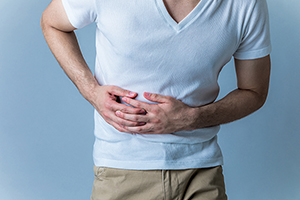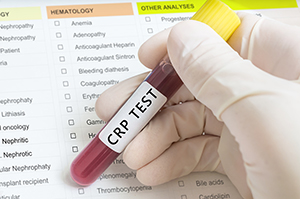



| By Dr. Ronald Hoffman

I long to write about things other than the current pandemic, but fast-breaking developments on the COVID-19 front impel me to examine some of the latest news. We’re seeing an upsurge in cases across the country, and indeed, around the world. While the death rate is way down due to better therapies, hospitals are experiencing a challenging surge, and lockdowns are closing schools and businesses across America. Thanksgiving was decidedly weird. Doesn’t it feel like it’s April all over again?!
What strikes me is that, over nine months into the pandemic, some of the most fundamental questions about COVID-19 remain unanswered. So here, without attempting to provide a definitive solution where none exists, I summarize some of these controversies. Even if you’ve circled the wagons around your particular entrenched belief, I urge you to keep an open mind on the most hotly-contested issues—which are by no means “settled science”.
Lockdown vs. “controlled burn”: Social distancing, quarantines and limits on gatherings make intuitive sense. Since time immemorial, humans have been using avoidance to stem the tide of deadly pandemics. Lately, politics have deobjectified the argument over whether to order shut-downs. The recent election became a referendum of sorts on whether to mandate closures, pitting freedom-minded conservatives against safety-oriented liberals.
But a recent study casts doubt on the efficacy of these restrictive measures as they may affect mortality rates.
Published last week in Frontiers in Public Health, the study concluded that “neither lockdowns nor lockdown stringency” were correlated with lower death rates.
After analyzing all the variables, the researchers concluded that only two factors correlated with severity of disease:
One was latitude; Northern and Southern latitude countries took the brunt of the pandemic. As we’re now seeing, colder temperatures are no deterrent to the viability of the virus. Additionally, they drive people indoors, and windows get closed, which reduces air circulation. Besides, countries in temperate latitudes have higher GDPs, which leads us to the second factor.
Even more significant was whether a country evinced “a slowdown of progression to higher life expectancies”. We’ve gotten accustomed to people living longer with each succeeding generation. But despite spectacular medical advances, that trend reversed course recently in the U.S. and parts of the industrialized world, where succeeding generations may experience a regression in life expectancy.
That’s because diseases of affluence have undermined our resilience. Ultra-processed food, sedentary lifestyle, and environmental pollutants are now drivers of NCDs—non-communicable diseases like diabetes, heart disease and hypertension—with their common denominator of obesity, responsible for the preponderance of premature, avoidable deaths in the West. They also render people more vulnerable to COVID-19.
School closures: The idea is that, as with previous pandemics like the flu, schools are a “Petri dish” for viral transmission. But kids are seldom very sick with COVID-19 and deaths in the pediatric population are exceedingly rare. Moreover, it’s unclear to what degree youngsters have the ability to transmit the virus to adults.
A recent detailed modeling analysis entitled “Effect of school closures on mortality from coronavirus 2019: Old and new predictions” argues that we shouldn’t base our assumptions on the flu, which is easily transmissible from kids to adults: “We confirm that adding school and university closures to case isolation, household quarantine, and social distancing of over 70s would lead to more deaths compared with the equivalent scenario without the closures of schools and universities.”
I recently had the occasion to speak to a Belgian elementary school teacher. While large parts of that country are shut down, and gatherings limited, the schools remain open. She said that, despite the personal risk to herself and her family, she was willing to continue teaching during the pandemic, because it would make her job immeasurably harder in years to come if kids’ academic progress were to be compromised by a long interruption of normal schooling. After seeing that schools have some of the lowest transmission rates by far, it appears that we’re acting on that new data in this country.
Asymptomatic transmission: One of the insidious aspects of COVID-19 is that people who seem entirely well can transmit the virus. This is one of the reasons the pandemic is so hard to contain. It’s also a prime rationale for screening people who feel fine but may have been exposed. But experts can’t agree on how significant a contribution this is making to the actual spread of coronavirus.
Research in the early part of the pandemic suggested that the rate of asymptomatic infection could approach 80%. Surely, you’ve heard of instances where someone tested positive but never felt under the weather. But now experts have downgraded that estimate to around one in five.
But can these “silent spreaders” insidiously propagate the virus? It’s likely that asymptomatic individuals harbor fewer viral particles than sick people who are sneezing and coughing. One review pinned the likelihood of transmission by carriers without symptoms to 42% less than those with outward signs of infection.
Even in shared households, researchers estimate that the risk of passing the virus from an asymptomatic carrier to others in the home is about one quarter the risk from a symptomatic person.
And even among couples, I’ve seen a lot of inconsistency. A husband or wife comes down with it, yet their spouses or children repeatedly test negative. A friend joked with his brother who tested negative after his wife was sick with COVID-19: “That’s because you don’t kiss your wife!” The brother indignantly replied: “I most assuredly do!” It’s like viral Russian Roulette.
Testing: First the hue and cry was, “We need more ventilators!” Then, when overzealous intubation appeared to hasten patients’ demise, the mantra became, “We need more testing!” But, as helpful as tests might be to forecast who should be quarantined, and to facilitate contact tracing, it’s fraught with problems.
Tests can be overly sensitive, revealing the presence of tiny residues of highly-amplified viral particles, in the absence of infection; conversely, they can miss infections, especially in the early stages of exposure.
Plus, when asymptomatic individuals with a low likelihood of exposure get tested, something called Bayes’ Theorem kicks in. It’s a mathematical principle that predicts that even with a highly accurate test, it’ll yield more false positives than true positives. “Better safe than sorry,” you might say. But false positive tests can be very consequential. They may lead us to overestimate the prevalence of a disease, leading to unnecessary shutdowns. They’re also very personally invasive.
Once you’ve tested positive, you have to quarantine, regardless of symptoms. All your contacts need to be notified, creating consternation and distress, and necessitating more testing by them in a daisy-chain fashion.
Government authorities will contact you, demanding all kinds of information about your recent activities, travel and contacts. In authoritarian countries, you can be compelled to answer, or face consequences. But these strictures rankle many Americans. So much the worse if they’re based on inaccurate test results.
Additionally, there’s a backlog on testing. In many places, Americans have to queue up for hours, sometimes at drive-in test facilities. Then, with labs swamped with samples, they have to endure the suspense of an up to 72-hour wait to obtain results. Meanwhile, they languish in a limbo of uncertainty, unable to travel, work, or see relatives.
Not the least of which, there’s the stigma attached to a positive result. An individual might be locked out of work or school, or relegated to solitary confinement until a retest confirms they’re not contagious—which no test at present has the capability to affirm with absolute certainty.
Newly-approved home tests might remove some of the obstacles, but even the latest iterations are “likely to have lower sensitivity and specificity than lab-run tests.” So, same problem.
Next week we’ll tackle the controversies over “herd immunity”, the futility of all that swabbing with disinfectants, plus masks, hydroxychloroquine, and the vaccine.
Though we think of declining estrogen as the hallmark of menopause, it's actually common for…

Up to 12 percent of Americans have ulcers at some point in life. Peptic ulcers…
Gallbladder disease is a modern illness. An estimated 20 million Americans have gallbladder disease. The…

There’s more to GI health than whether or not to take an acid-blocker. All too…

In the latest attempt to remove “stigma” from medical terminology, liver specialists have come up…

Q: My husband’s high sensitivity C-reactive protein (hs-CRP) is 1.62 and his homocysteine is 13.1. If…

Banish the Bloat: Leyla Weighs In with Tips and Insights

Our virtual voicemail is open 24/7, so there's no need to wait to submit your questions for Dr. Hoffman. Leave a message, and you may hear your question featured on the Intelligent Medicine radio program!